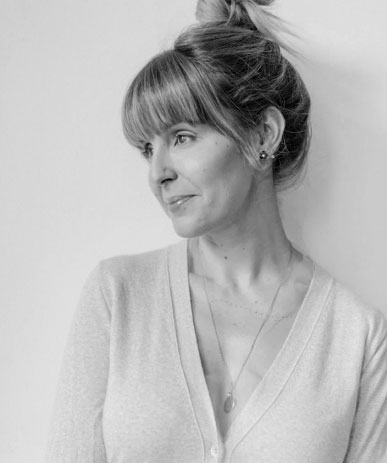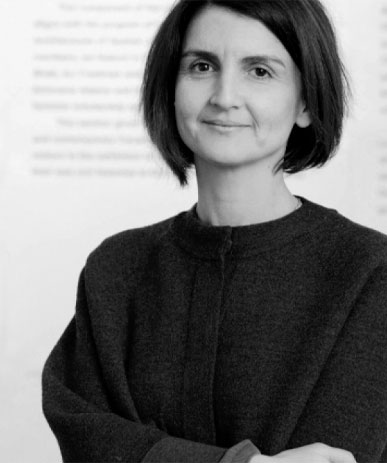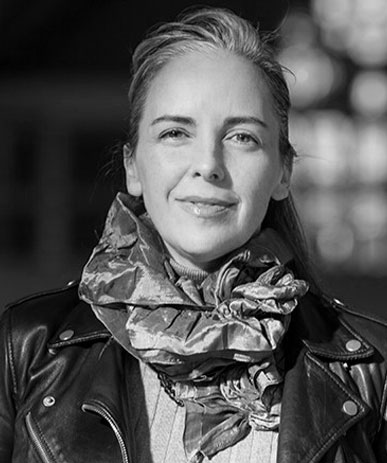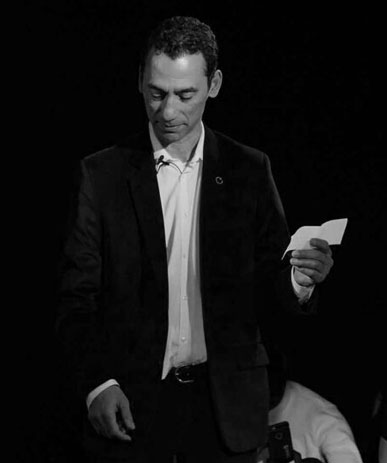CASOS DE ESTUDIO
JUSTICIA RESTAURATIVA
* Para referencias de imágenes, desplácese hasta la parte inferior de la página.
Author of case study: Marcela Torres Molano
Geopolitical location of space:
Carrera 52 No. 42-73
Medellín, Antioquia
Extant? Yes
Architect: Not specified
Start date: 17 July 2019
End date: 18 July 2019
A Colombian Special Jurisdiction for Peace (JEP) first instance hearing for victims of forced disappearance in Medellín’s Comuna 13 took place here. The objective of this hearing was to establish whether or not there are unreported burial sites in Comuna 13 or its surroundings (the Comuna 13 is one of the most deprived neighbourhoods of Medellín). This was an important TJ hearing of the Special Jurisdiction for peace. It was a first instance hearing to establish if a further investigation was needed for this particular case.
The most important encounter was between victims and public institutions and organisations that were responsible for the search or exhumation of victims. The institutions were asked to publicly demonstrate to the victims their plans, measures, actions, processes, achievements, challenges and proposals during the complex panorama.
Yes, a Transitional Justice public hearing of the Colombian Special Jurisdiction for Peace (JEP) took place in this courthouse. The hearing was implemented during 2 consecutive days and had a total duration of ten hours.
The courthouse has a regular arrangement where judges sit in a front line in front of the room. However the JEP clarified that the hearing was an instrument to guarantee the necessary and irreplaceable participation of the victims, whose rights are the raison d’être of the JEP.
This was an encounter between the JEP judges, the local government of Medellín, the families of missing victims of the Comuna 13, and representatives from non-Governmental organisations.
This is an urban complex of government buildings that belongs to the administration of Antioquia department and Medellín municipality.
The Courthouse is located in a complex of governmental buildings that includes an open plaza where civic activity and demonstrations generally happen. It is a very symbolic place for social causes in Medellín. This is an institutional and well recognised governmental structure. The hearing took place in a regular courthouse, following the institutional protocols of the Special Jurisdiction for Peace (JEP). As any other JEP hearing, the judges wear the black robes with indigenous shapes embroidery, characteristic of this Special Jurisdiction.
The hearing took place in the fourth floor of La Alpujarra Administrative Centre, officially known as the José María Córdova Administrative Centre. An urban complex of government buildings built in 1980. The Alpujarra Centre has two buildings separated by a public plaza, and includes public businesses as the National Tax Administration and the seat of Teleantioquia (a regional TV channel). It has its own metro station (Alpujarra) which makes the site easily accessible.
The Courthouse’s main room has a regular Colombian justice arrangement with judges seated in front, on top of an elevated stage (capacity of the room: 168 seats, besides the judges). To the left, there is one wood structure equipped with a microphone for individual interventions. In front of the judges, there was an empty space used for presentations and performances from collectives and victims. The hearing had a series of very important symbolic acts, such as leaving empty chairs that evoke the disappeared victims and the relatives who died waiting for them to arrive.
The lateral walls were decorated with the pictures of the victims and black silhouettes representing their absence. A television screen, with the names of the victims was situated to the right of the stage, and a bigger projection screen was located to the left. Artificial lighting (white lamps) played an important part of the room illumination.
Even though the courtroom was not designed for TJ purposes, the fact that collectives and victims were allowed to appropriate it with their symbolic acts gave it a sense of safety and inclusion. However, the hierarchical seating’s arrangement put the judges in a superior status compared to the victims, which is not an ideal scenario for a reparative process. Moreover, during some symbolic acts, the judges had to change their seats, and exchange them with other participants, demonstrating that the regular arrangement of courthouses was not ideal for reparation acts.
One other important spatial element was the plaza located outside the building, a very symbolic place for social causes in Medellín. The courthouse is located inside a complex of governmental buildings, that includes an open plaza where civic activity and demonstrations generally happen. This plaza became an extension of the hearing site, where other supporters and victims’ families had the opportunity to occupy and manifest. Colombia has no certainty about the total number of victims of forced disappearance or other people reported missing. The official record established that between 1970 and 2018, 80,000 people were forcibly disappeared; 460 of these cases have been registered in commune 13. 384 are currently missing, 76 were murdered and 8 appeared alive. Out of the total, 322 cases were men and 62 women.
During the JEP hearing participants were allowed to expose their cases and had the opportunity to ask questions and demand clarification from the governmental institutions. After this hearing ended, the JEP ordered the Government of Antioquia the “construction of a proposal for dignity and historical memory of the victims of forced disappearance in commune 13. This was an important hearing for the TJ system, as it was part of the truth clarification of one of the most problematic military operations during the Colombian conflict, “La Operación Orion”, in which 92 civilians disappeared.

es autora, conferencista, columnista y podcaster en los campos de la arquitectura y las artes decorativas. Obtuvo su un pregrado en Comercio con especialización en Marketing de la Escuela de Negocios John Molson y actualmente se encuentra realizando su maestría en Historia del Arte en la Universidad de Concordia, Montreal. Además, estudió Psicología Industrial en Los Ángeles, California y es autora de dos libros sobre diseño (2015, 2018) publicados por Les Éditions Cardinal.

es colombiana, candidata a doctorado en el Departamento de Historia del Arte de la Universidad Concordia. Tiene experiencia en diseño arquitectónico y activismo comunitario y es maestra en Construcción y Diseño Urbano de la Escuela de Arquitectura Bartlett, Londres, Inglaterra. Sus intereses se centran en el arte y movimientos sociales, el activismo colaborativo en escenarios de posconflicto, el arte colectivo y el arte producido en relación con el entorno construido.

es candidato a doctorado en Humanidades de la Universidad de Concordia, enfocado en la agencia espacial, la estética social, las narrativas juveniles y las representaciones gráficas de la memoria urbana. Ha publicado sobre la relación entre los niños, el juego y el espacio público en Cartagena, Colombia. También ha trabajado como editor en proyectos literarios, entre ellos Territorio Fértil, que recibió el premio María Nelly Murillo Hinestroza de literatura afrocolombiana.

es profesora asociada y Catedrática de investigación de Canadá para la arquitectura de espacios de Justicia (Tier 2) en la Escuela de arquitectura Peter Guo-hua Fu de la Universidad de McGill University, Montréal, Canada. Se enfoca en la investigación de viviendas en entornos de bajos ingresos, diseño participativo, protesta civil, diseño urbano y paisajes y razas. Sus publicaciones incluyen el libro co-editado, Orienting Istanbul (2010) y el libro individual, Istanbul Open City (2018).

es una artista y profesora asociada y Catedrática de investigación de Canadá para la arquitectura de espacios de Justicia (Tier 2) en la Escuela de arquitectura Peter Guo-hua Fu de la Universidad de McGill University, Montréal, Canada. Se enfoca en la investigación de viviendas en entornos de bajos ingresos, diseño participativo, protesta civil, diseño urbano y paisajes y razas. Sus publicaciones incluyen el libro co-editado, Orienting Istanbul (2010) y el libro individual, Istanbul Open City (2018).

es el antiguo catedrático de Canadá en Historia Oral y performance (2016-2021), es profesor asociado al departamento de Teatro de la Universidad de Concordia y es codirector del Centro de Historia Oral e Historia digital (COHDS). Por medio de la financiación de Canada Foundation for Innovation, creo en 2018 el Laboratorio de actos de escucha , un centro líder de investigación y creación para el poder transformador de escuchar.